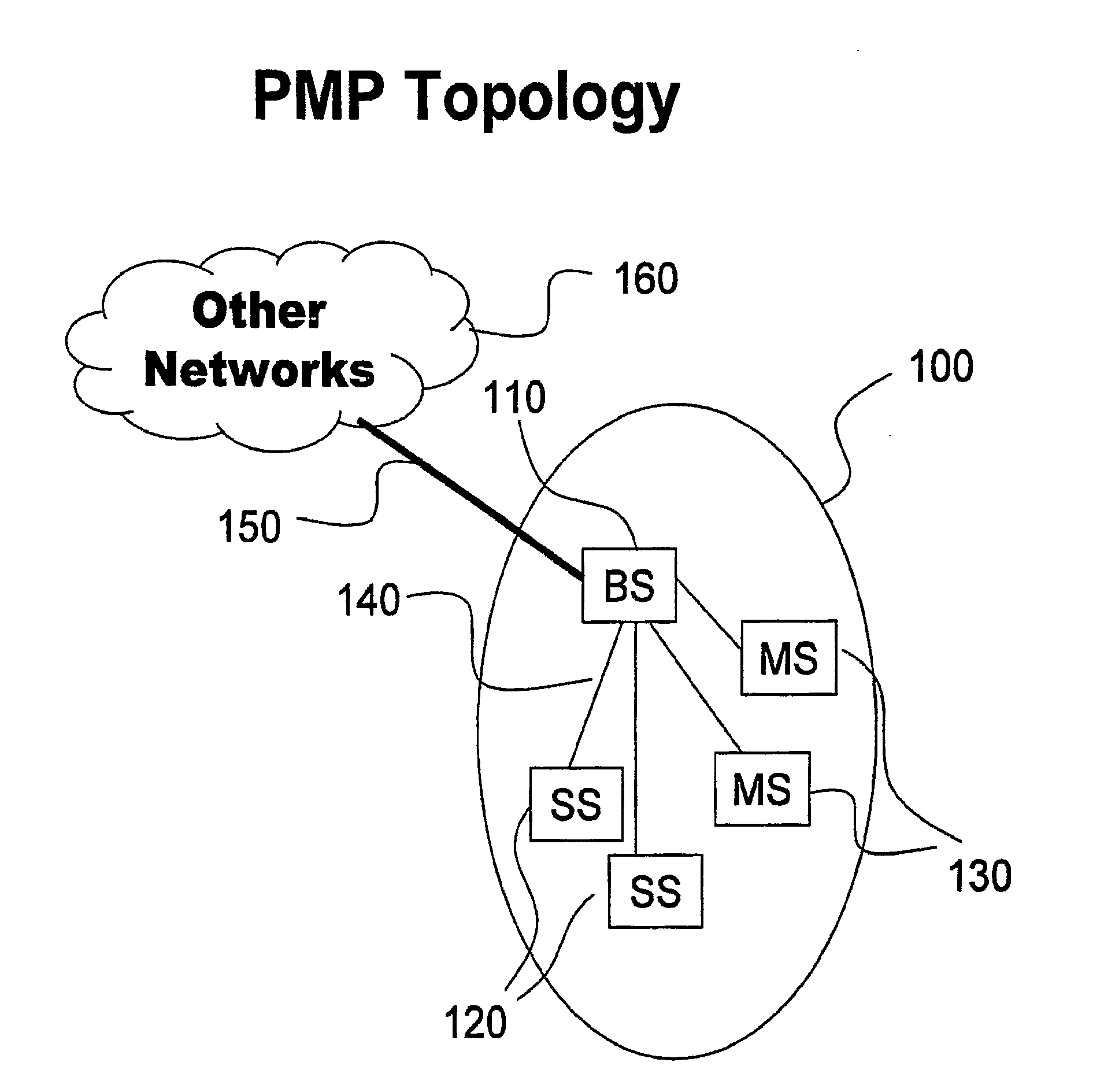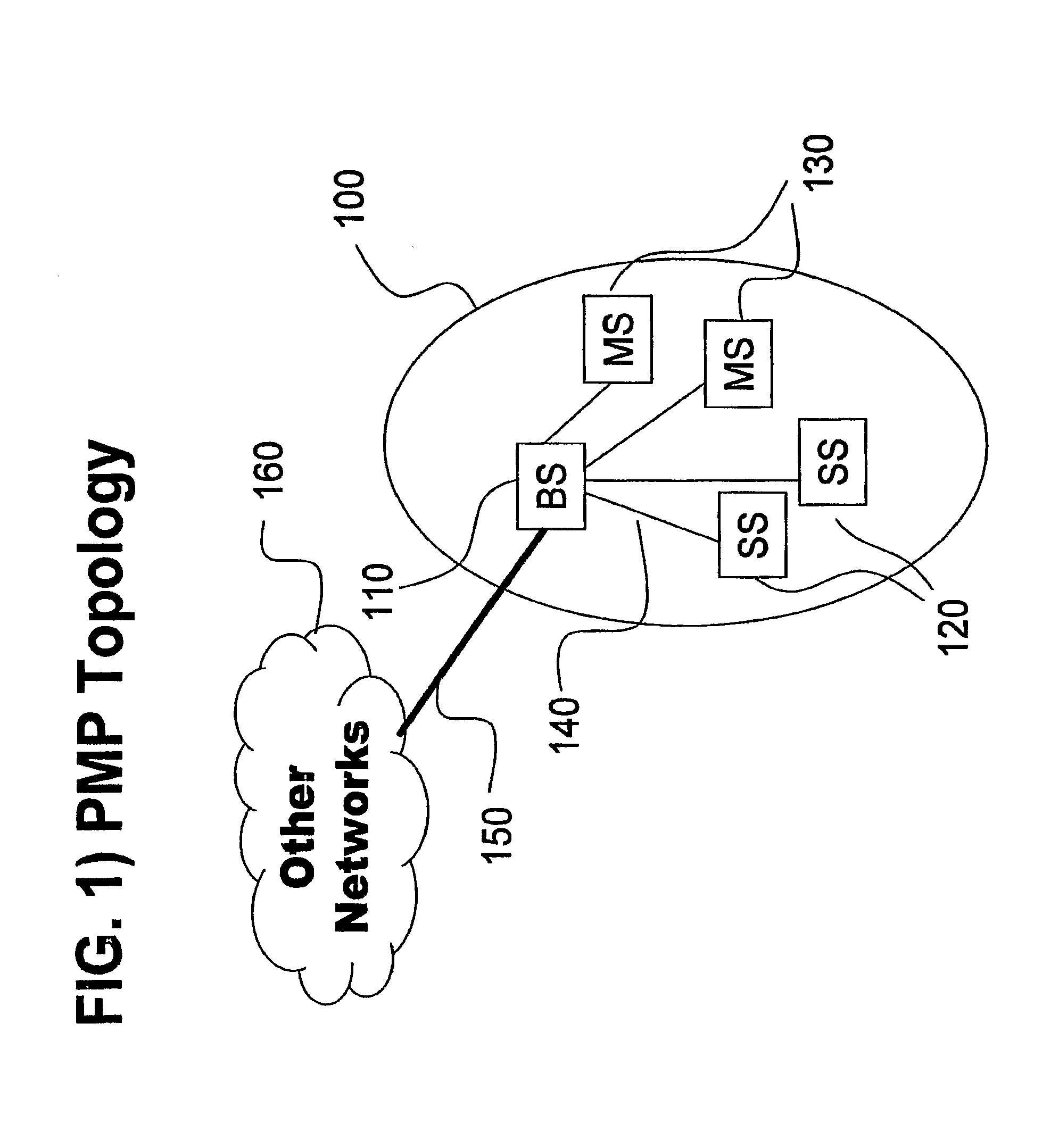Supporting mobile ad-hoc network (Manet ) and point to multi-point (pmp) communications among nodes in a wireless network
a wireless network and multi-point communication technology, applied in the field of wireless communication systems, can solve the problems of difficult to obtain the allocation of new radio frequency (rf) bands for the operation of wireless communication networks, and no solution has been proposed for enabling pmp and mesh/manet protocols to coexist on a wireless network
- Summary
- Abstract
- Description
- Claims
- Application Information
AI Technical Summary
Benefits of technology
Problems solved by technology
Method used
Image
Examples
Embodiment Construction
[0034]As used herein, a “mesh point” (MP) is any node that is a member of a network and practices either MANET or mesh signaling protocols that are established for the network. According to the invention, the MP nodes may coexist as well as communicate with other member nodes of the network that practice PMP signaling protocols. The PMP protocols are defined herein in three protocol functionality suites, namely; Base Station (BS), Fixed Subscriber Station (SS), and Mobile Subscriber Station (MS). Specifically, coordination is established between the BS and the MP protocol sets. The SS and the MS protocol sets need not interact with the MP protocol set provided the former sets only participate in the PMP aspects of the network. It is, however, at times convenient as well as advantageous to be able to co-locate the SS or the MS protocols with the MP protocols at the same station or node in order to implement specific architectural elements.
PUM
 Login to View More
Login to View More Abstract
Description
Claims
Application Information
 Login to View More
Login to View More - R&D
- Intellectual Property
- Life Sciences
- Materials
- Tech Scout
- Unparalleled Data Quality
- Higher Quality Content
- 60% Fewer Hallucinations
Browse by: Latest US Patents, China's latest patents, Technical Efficacy Thesaurus, Application Domain, Technology Topic, Popular Technical Reports.
© 2025 PatSnap. All rights reserved.Legal|Privacy policy|Modern Slavery Act Transparency Statement|Sitemap|About US| Contact US: help@patsnap.com



